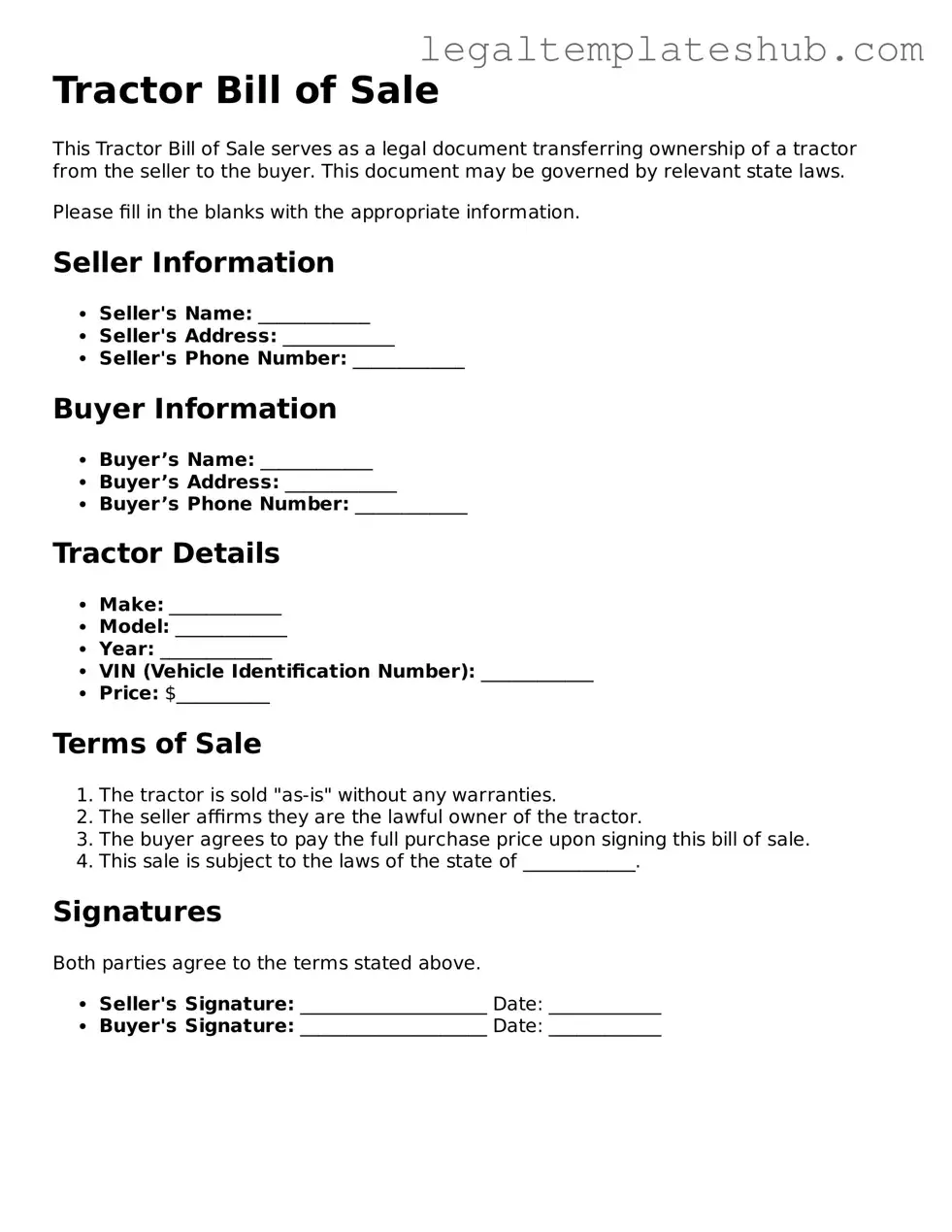Tractor Bill of Sale - Adapted for State
Instructions on Filling in Tractor Bill of Sale
After obtaining the Tractor Bill of Sale form, you will need to complete it accurately to ensure a smooth transaction. This document serves as a record of the sale and includes essential information about both the buyer and seller, as well as the tractor itself. Follow these steps to fill out the form correctly.
- Begin by entering the date of the sale at the top of the form.
- Provide the full name and address of the seller. This information should be clear and complete.
- Next, enter the full name and address of the buyer. Ensure that this information is also accurate.
- Fill in the details of the tractor being sold. Include the make, model, year, and Vehicle Identification Number (VIN).
- Indicate the sale price of the tractor. Be specific about the amount in both numerical and written form.
- Include any additional terms or conditions of the sale, if applicable. This could involve payment methods or warranties.
- Both the seller and buyer should sign and date the form at the designated areas. Signatures validate the transaction.
Once you have completed the form, keep a copy for your records and provide a copy to the buyer. This ensures both parties have documentation of the sale for future reference.
